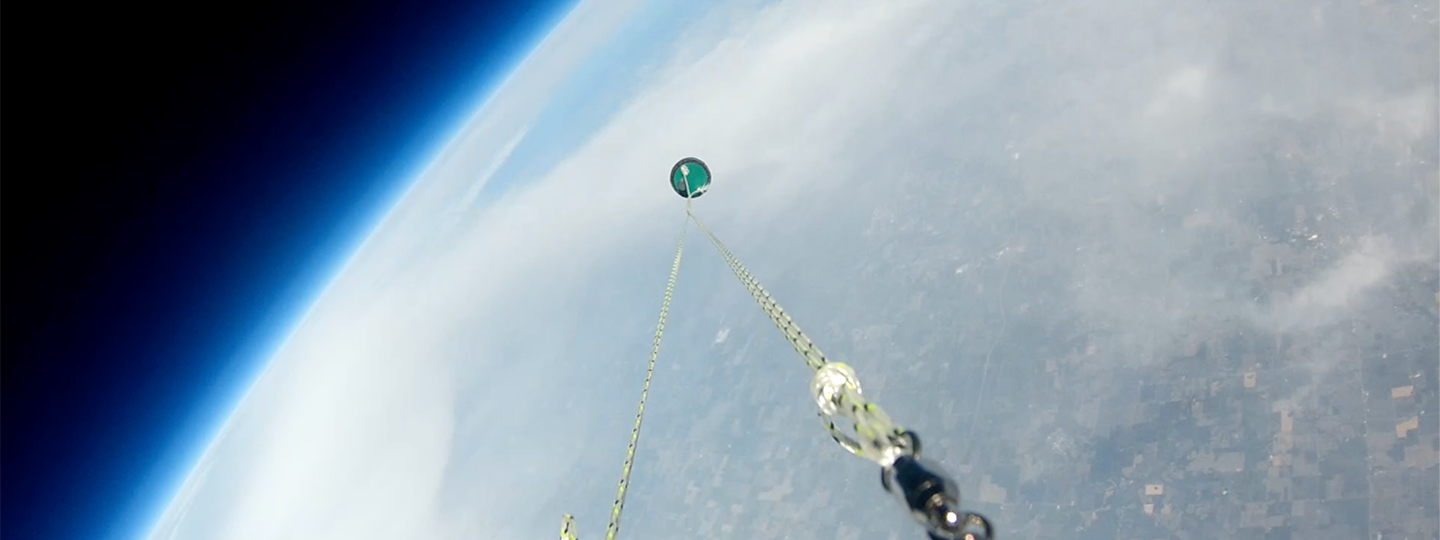
ETCS reaching above the clouds to track eclipse
By Blake Sebring
April 3, 2024
One aspect of Purdue University Fort Wayne’s eclipse viewing event on Monday may require some patience. The College of Engineering, Technology, and Computer Science, and ETCS Outreach Programs plan to launch a 10-foot weather balloon into the stratosphere to see how various payloads react to the different altitudes, heat, and cold during the eclipse.
The hard part might be waiting 7-10 days for the results and video to be made available on the outreach page of the ETCS website. It’s still an excellent opportunity to learn about conditions and experiments that can’t happen again locally for 75 years.
“We want to have our students interact with the eclipse and be able to see it from a different perspective,” said Katy Henry, the ETCS director of engagement.
The equipment is owned by Upland’s NearSpace Education, which works with commercial, government, and research institutions. NearSpace will launch 10 weather balloons on eclipse day throughout the state.
The PFW balloon will be laid out in the university’s Science Mall starting at about 1:30 p.m., filled with hydrogen, hooked onto three payloads not weighing more than 12 pounds, and lofted into the sky around 2:15 p.m. The balloon will rise about 6 meters per second to ascend above the cloud surface, requiring about 45 minutes to reach the optimum altitude for a clear camera view of the eclipse.
“It will go through 99% of our atmosphere,” Henry said.
Federal Aviation Administration clearance is required, alerting local airports and airplanes where the balloon is expected to be and when.
Along with a camera and two sensory trackers, the balloon will carry chunks of wood, cement and Lego pieces to study reactions to altitude and extreme temperature differences.
“We are going to put them in airtight Tupperware containers and duct tape them,” Henry said. “They can weigh no more than four pounds in each component of the payload. We have to measure it with a scale and triple-check that you aren’t going over.”
The camera and sensors will be wrapped in special UV tape.
Students helping with the latex balloon must wear gloves so oils on their hands do not damage the surface. If wind gusts on the ground are stronger than 25 MPH, the liftoff may be canceled. That’s an indication the jet stream velocity may be above 100 MPH and too much for the balloon to withstand.
While strong winds would be bad for a launch, rain may not be a problem.
Though the cameras and sensors have undergone specialized vibration and temperature testing, the balloon will eventually burst after passing 80,000 feet, but before reaching 100,000 feet. A smaller balloon will keep a parachute open as the payload descends. Depending on opposing jet stream effects, the materials could land three miles or three hours from the launch site.
From the ground, PFW officials can track the balloon as it ascends through different atmospheric layers. They’ll also be able to estimate the general landing area.




